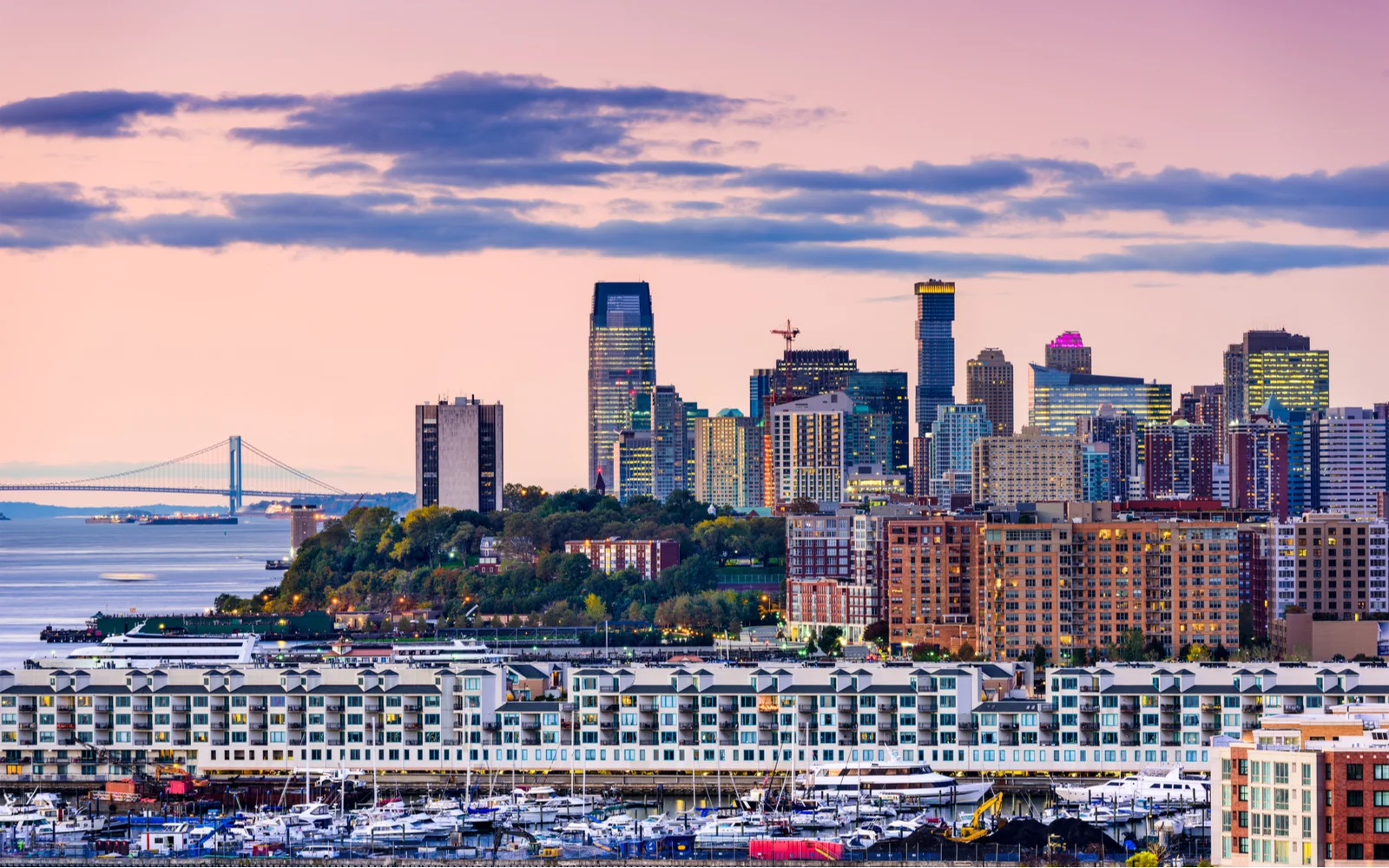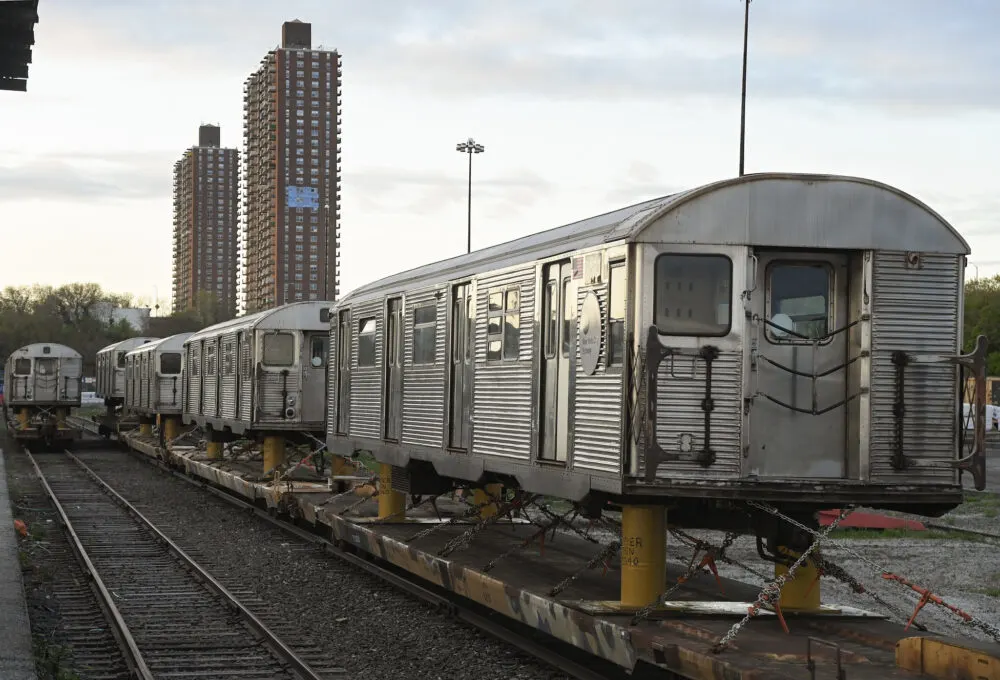Is Jersey City safe to visit?
Jersey City rarely, if ever, makes it on a list of top travel destinations, but recent infrastructure upgrades and economical prices are diverting tourists away from Manhattan and into neighboring Jersey City.
For years, world-class museums, parks, and nightlife have attracted people to Manhattan, but the associated price tag for these amenities is reinvigorating neighboring cities such as Jersey City. Jersey City offers tourists many of the city experiences of Manhattan for a fraction of the price.
Of course, Jersey City doesn’t replace Manhattan. Fortunately, Jersey City features excellent public transit to and from Manhattan, making a day trip to the big apple quick, easy, and affordable.
Is Jersey City Safe to Visit in 2025?
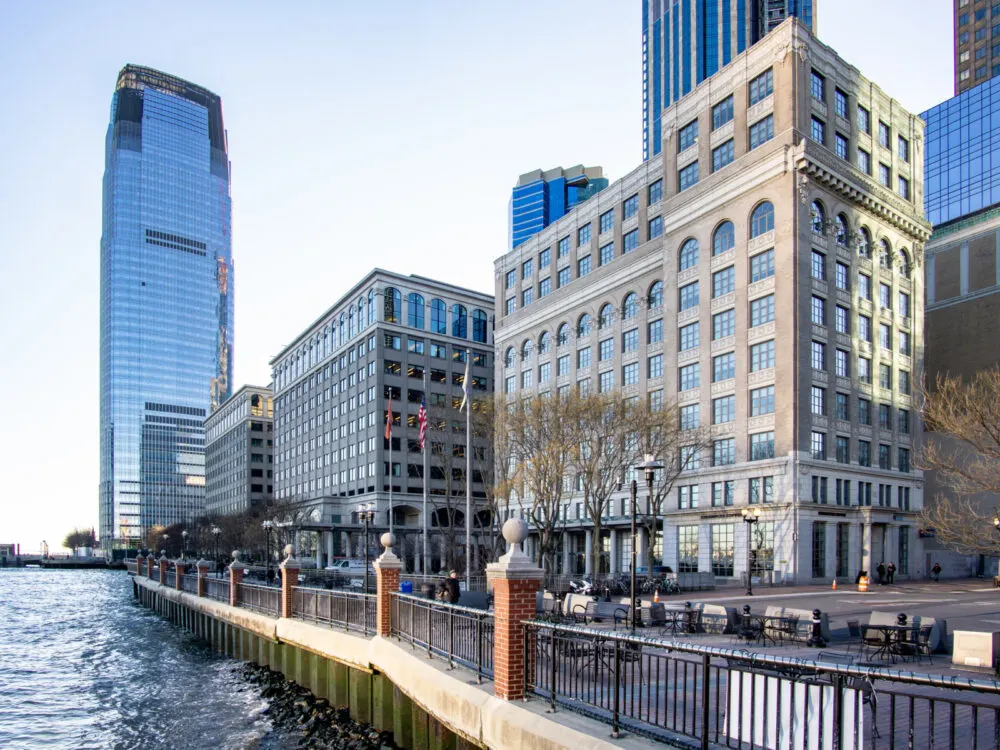
Jersey City, NJ / United States – Jan. 11, 2019: Exchange Place/Brian Logan Photography/Shutterstock
West Jersey City is safe to visit. Jersey City experiences an above-average amount of crime. Most crime is concentrated in residential neighborhoods on the east and south sides of Jersey City, away from major tourist destinations.
Despite the geographic division of crime, Jersey City is a dangerous place by the numbers. Jersey City scores a 34 out of 100 for safety compared to other US cities, a failing score by any standard.
Jersey City’s crime rating is due to high property crime rates. Robberies, burglaries, and thefts are common in Jersey City, with some statistics reporting a one in five chance of becoming a victim of property crime in neighborhoods like Greenville.
Crime in Jersey City
Jersey City’s growth has exploded over the past few years because of the high rents in NYC. The exodus from Manhattan has generated new interest in Jersey City as an affordable living option and has triggered increased investment in the city, making it more attractive for tourists.
New apartments, restaurants, stores, and museums have many calling Jersey City “West Wall Street”. If the cost of living continues to trend upwards in NYC, we will likely see an increase in Jersey City tourism.
However, Jersey City isn’t a utopia. Development has expunged some crime from the city, but criminal activity still exists, especially on the south and east sides.
Jersey City’s crime rates are trending downwards. Increased public safety measures, new infrastructure, and public outreach programs implemented because of the city’s rapid gentrification have reduced crime somewhat, but the city remains a dangerous place.
Public safety improvements in and around Jersey City’s western half have decreased crime rates, but cannot fully mask the dismal state of crime in the city’s other neighborhoods.
On average, property and violent crime are higher in Jersey City than everywhere in New Jersey except for Newark. The most common property crime tourists and residents face when visiting Jersey City is theft, with a rate of 10 thefts per 1,000 people.
The most common violent crime tourists and residents face when visiting Jersey City is assault, with a rate of about three assaults per 1,000 people.
Be aware that New Jersey includes verbal intimidation in its definition of assault, so not all assaults involve physical harm. In Jersey City, the violent crime rate is more than double the state average.
Similarly, property crime rates in Jersey City are higher than the state’s averages. Residents and tourists are more likely to experience property crime than violent crime in Jersey City, but that isn’t to say that property crimes are not violent.
Muggings and robberies make up a significant portion of crimes in Jersey City. These attacks can be verbal or physical and perpetrated with or without a weapon.
On average, Jersey City residents have a 1 in 74 chance of becoming a victim of property crime. Property crime rates are lower for tourists than residents, but tourists should still exercise caution when visiting heavily-trafficked areas.
Tourists should avoid traveling at night to reduce their risk of becoming a victim of a property crime. Tourists should also organize their travel with a licensed transportation company or rideshare.
When traveling on foot, Tourists should avoid dimly lit streets. Establish boundaries for your travel before you leave your housing accommodation. Pay attention to street signs and look out for notoriously bad streets, like Martin Luther King Boulevard and Ocean Avenue.
In addition to property and violent crimes, Jersey City also experiences relatively high rates of vandalism, 7 incidents per 1,000 people, and drug-related crimes, about 4 incidents per 1,000 people.
These crimes are unlikely to affect tourists but can create hostile environments where violent crime is more likely. Unfortunately, Jersey City fairs poorly in terms of violent crime too.
Rates of assault are as high as 1 in 8 in Jersey City’s most dangerous suburbs. Notably, violent attacks generally target residents, not tourists. On average, Jersey City’s public transportation is safer than NYC’s.
Still, muggings, assaults, and petty theft are not uncommon on the buses and trains in Jersey City. Overall, tourists should exercise caution when visiting Jersey City, especially when visiting the eastern or southern portions of the city.
Avoiding Bad Neighborhoods
Jersey City residents claim that the western half of the city is safest. According to available crime statistics, this claim appears to be true.
The worst areas of Jersey City, Greenville, and Bergen-Lafayette, are located in the city’s southern region. Dangerous areas also exist in the city’s eastern region: McGinley Square and Journal Square are two notable examples.
However, crime does not stick to strict geographic boundaries. Pockets of crime exist even in western neighborhoods such as the West Side.
Greenville
Residents and experts agree that Greenville is Jersey City’s most dangerous neighborhood. Greenville encompasses the southern section of Jersey City, from the area south of the West Side Branch of Hudson-Bergen Light Rail to Bayonne, New Jersey.
Greenville is a residential neighborhood with no tourist attractions. Tourists driving through Greenville are unlikely to experience any altercations so long as they drive with a purpose.
Greenville, Jersey City, is the most dangerous neighborhood in Jersey City. The area’s violent crime rate is 51% higher than the national average.
On average, there are about 140 more violent crimes per 100,000 people in Greenville than in other neighborhoods in Jersey City. Data about the frequency of crimes in Greensville are unavailable, probably due to the nature of crime in the area.
Bergen-Lafayette
Bergen-Lafayette is a loosely defined neighborhood in the southwestern portion of Jersey City. The area is Jersey City’s second most dangerous neighborhood, with a violent crime rate that is 45% higher than the national average.
Surprisingly, Bergen-Lafayette’s property crime rates are 5% lower than the national average. A good sign for tourists visiting the area since they’re more likely to experience property crime.
Bergen-Lafayette is bordered by Greenville to the south, Lincoln Park to the West, and McGinley Square to the North.
The neighborhood has a few parks that tourists may be inclined to visit for a picnic or some intimacy with nature, but attractions in Bergen-Lafayette are limited to local historical sights that are of little interest to tourists.
While the parks are a tourist draw during the day, they become hotspots of criminal activity at night. In general, tourists can visit Bergen-Lafayette during the day but should avoid the area at night.
Tourists traveling to the area by public transit should avoid conversations with strangers and pay attention to their surroundings.
McGinley Square
McGinley Square is a central Jersey City neighborhood. Violent crime rates are 40% higher in McGinley Square than the national average.
Like Bergen-Lafayette, McGinley Square has surprisingly low rates of property crime given its high rate of violent crime. Residents consider McGinley Square to be safe to visit during the day.
Tourists should stick to Montgomery Street and Bergen Avenue when visiting McGinley Square and shouldn’t have trouble doing so, as most of the eateries and pubs in the neighborhood are along these two major thoroughfares.
Tourists should avoid McGinley Square at night and organize transportation to and from the area with a rideshare if possible. Tourists should confirm their pick-up information with the driver and never enter an unmarked car or taxi.
Journal Square
Just north of McGinley Square is Journal Square, another central Jersey City neighborhood with above-average crime rates. Journal Square’s violent crime rate is 37% higher than the national average.
Journal Square is more lively than Greenville, Bergen-Lafayette, or McGinley Square, with plenty of dining options and access to Lincoln Park. If possible, it’s best to visit Journal Square during the day.
The neighborhood is busy — this makes it easy to blend into the crowd and avoid conflict. Tourists may be at increased risk for theft in this neighborhood during high-traffic times and are advised to leave their valuables at home.
Westside
Westside isn’t necessarily a bad neighborhood. Westside is a neighborhood in western Jersey City that experiences relatively low crime rates compared to areas like Greenville.
Still, violent crime rates are over 30% higher in Westside than in the average US city: A statistic that proves tourists should remain vigilant regardless of what Jersey City neighborhood they visit.
Other Safety Concerns
Other safety concerns in Jersey City that are less prevalent than theft and assault are kidnapping, identity theft, and natural disasters.
Kidnapping
There is approximately 1 kidnapping per 1,000 people in Jersey City. The rate of kidnapping is moderate to low compared with other US cities but is of particular concern for tourists who are often the victims of kidnappings.
Tourists can reduce their chances of being kidnapped by sticking with a group and limiting travel to suburban neighborhoods, especially during the evening and night.
Identity Theft and Fraud
Jersey City experiences a moderate to low amount of identity theft. Tourists are at increased risk of losing their personal information due to a lack of knowledge about the city. As a general rule of thumb, carry cash.
Make sure your bank card can be remotely deactivated if you decide to use it in the event it’s lost or stolen. Avoid using ATMs on the street when possible. If you must use a streetside ATM, pull on the card slot with moderate force to check for skimmers.
Skimmers are devices attached to ATMs and other card readers by criminals to steal personal information. In general, follow your gut intuition about an area to avoid the theft of your personal information.
Natural Disasters
Jersey City does not experience frequent natural disasters. However, the area is susceptible to flooding during heavy rains and does experience occasional hurricanes.
Consult the National Weather Service before planning your trip to Jersey City to avoid potential natural disasters.
Things to Consider
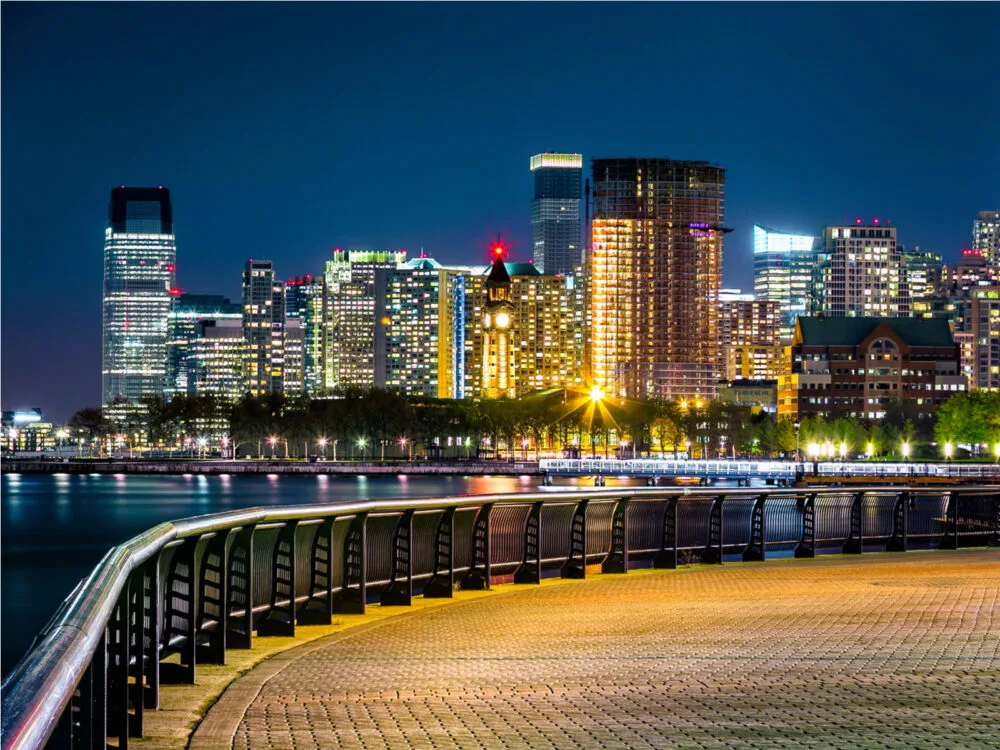
Mihai_Andritoiu/Shutterstock
Jersey City is an attractive alternative to Manhattan, but the high levels of violent crime mean tourists should consider the following:
Do:
- Travel in a group
- Leave valuables at home
- Avoid interactions with strangers, particularly in suburban neighborhoods
- At night, stick to well-lit, populated areas
Don’t:
- Travel to Greensville
- Enter unmarked taxis, cabs, or rideshares
- Travel alone at night
- Let your guard down, even in west Jersey City
Frequently Asked Questions
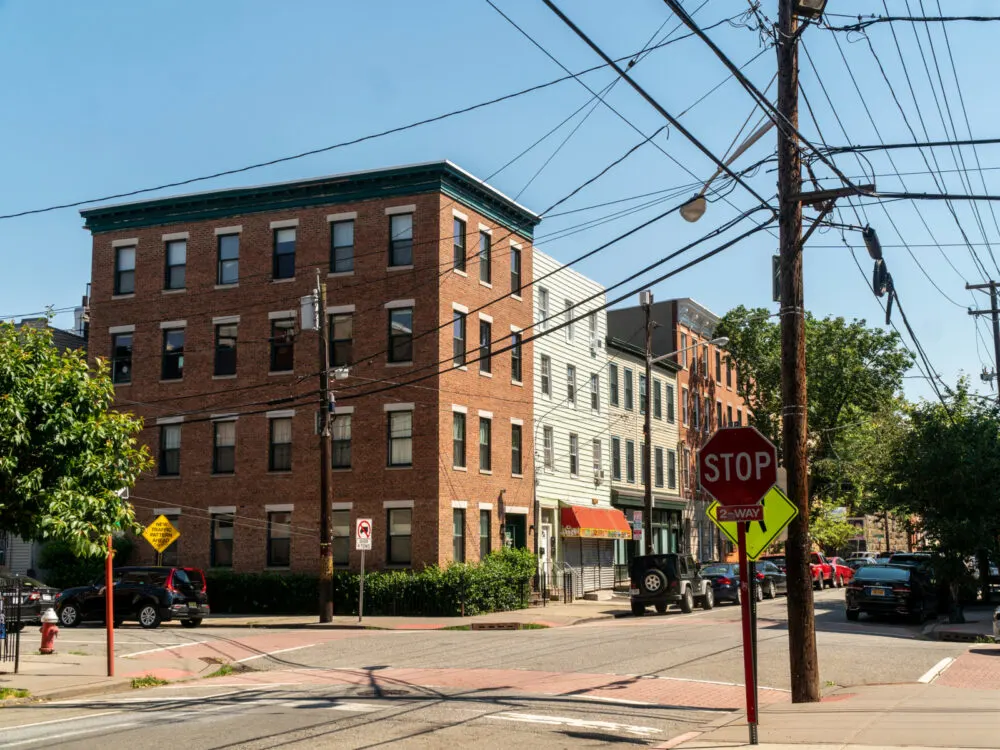
rblfmr/Shutterstock
Below are some frequently asked questions about visiting Jersey City.
Is it safe to walk around Jersey City?
Traveling by foot in most parts of Jersey City during morning and daytime hours is safe. Tourists should avoid traveling by foot in the southern sections of the city.
Public transit in the city’s southern region can also be dangerous, so it’s best to avoid the area altogether. If possible, traveling by foot at night should be avoided.
Is it safe in Jersey City?
No, Jersey City isn’t considered a safe city. However, areas that are safe do exist in Jersey City. Tourists can increase their safety by educating themselves about the neighborhood they’re staying in during their visit and avoiding interactions with strangers.
Is Jersey City worth visiting?
Jersey City is worth visiting. Locals consider Jersey City to be NYC’s sixth borough because it offers many of the amenities of the big apple.
Tourists can find fine dining, world-class museums, and American historical landmarks such as the Ellis Island Immigration Station in Jersey City.
Jersey City’s proximity to Manhattan makes it an attractive destination for tourists looking to experience Manhattan on a budget.
Is Jersey City cheaper than NYC?
Yes, Jersey City is cheaper than NYC. Consumer prices are anywhere from 15%-30% lower in Jersey City compared to NYC, particularly Manhattan.
Is The Heights neighborhood in Jersey City safe to visit?
Yes, The Heights is a safe neighborhood. Tourists can enjoy all the diversity that inspired the setting for West Side Story without fearing for their safety.
What areas of Jersey City should I avoid?
Tourists should avoid the following neighborhoods in Jersey City: Greensville, Bergen-Lafayette, McGinley Square, and Journal Square. Tourists should exercise caution in and around Downtown.
So, Is Jersey City Safe to Visit?
There is no mistake that Jersey City is experiencing a cultural and economic revival. Still, the neighborhood has a long way to go before it can be considered safe. Tourists should exercise an increased level of caution when visiting Jersey City. Safe travels!



